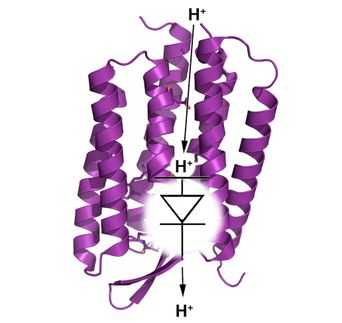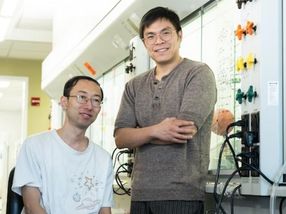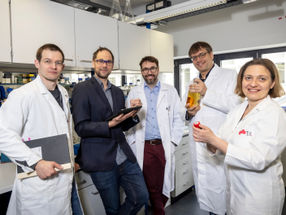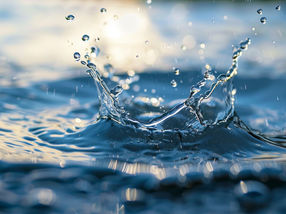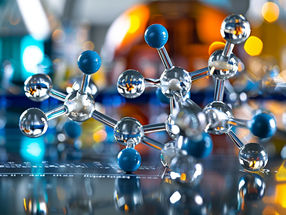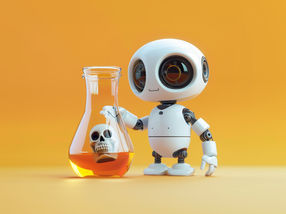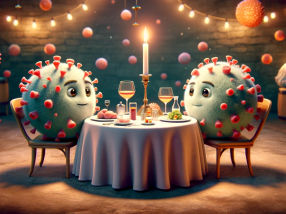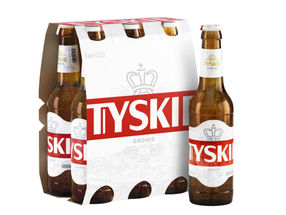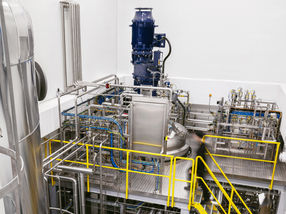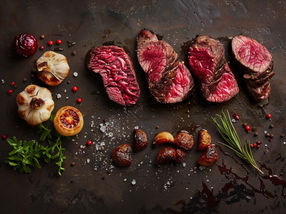Which structural characteristics make glycoproteins good antifreezes?
09-Feb-2004
Many animals and plants in very cold regions have to keep their bodily fluids
from freezing in order to avoid the destruction of cell membranes and other
heavy damage. Their bodies therefore synthesize their own antifreezes. Among the
first antifreeze molecules to be discovered are certain glycoproteins (proteins
bound to sugars) from polar fish. Japanese researchers have now systematically
examined these glycoproteins.
The antifreeze glycoproteins isolated from the blood of polar fish are
structurally very varied but amazingly consist of a single motif repeated again
and again: a tripeptide with the amino acid sequence alanine-threonine-alanine.
Each threosine is equipped with a disaccharide (a "double sugar") made of
galactose and N-acetylgalactosamine. The glycoproteins bind to the surface of
tiny ICE crystal nuclei and prevent them from growing into larger crystals. In
this way they lower the freezing point of water without changing its melting
point. This difference is known as thermal hysteresis and is a measure of the
antifreeze activity of a substance. In addition, the fish glycoproteins change
the morphology of the ice crystals; instead of ordinary ice crystals, hexagonal
bipyramids are formed.
The team led by Shin-Ichiro Nishimura found proteins made of anywhere from four
to fifty tripeptide units in fish blood. In order to find out what's going on
with this motif, the researchers prepared chains of up to seven tripeptide
units. Even the monomer forces ice crystals into the hexagonal structure.
Thermal hysteresis is observed from the dimer up. The effect initially increases
with the number of tripeptide building blocks. A maximum is reached at five
units; hysteresis cannot be raised by the addition of the sixth and seventh
tripeptide.
Based on spectrometric data, the researchers determined the probable 3-D
structure of the trimer. Its peptide backbone is twisted into a left-handed
spiral. The sugar units all protrude on the same side, forming a hydrophilic
(water-friendly) front. The hydrophobic (water-repellant) side chains of the
molecule form a hydrophobic front. This structural principle seems to be common
to all antifreeze glycoproteins. In addition, the structure of the sugar unit
and the methyl group of the threonine also play an important role in protection
from freezing.
Most read news
Other news from the department science

Get the chemical industry in your inbox
From now on, don't miss a thing: Our newsletter for the chemical industry, analytics, lab technology and process engineering brings you up to date every Tuesday and Thursday. The latest industry news, product highlights and innovations - compact and easy to understand in your inbox. Researched by us so you don't have to.
Most read news
More news from our other portals
Last viewed contents
Flexible and Elastic: Ceresana Analyzes the Market for Plasticizers
Go to page
Praxair Asia Announces Price Increases for Select Electronic Process Gases
Go to page
Dow Corning and Rohm and Haas forge strategic alliance
Go to page
Integral Role As Life-Sustaining Technology Drives Demand for New Critical Care Antibiotics
Go to page
Henkel successfully completes acquisition of Sovereign Specialty Chemicals
Go to page
Basell to build new Hostalen ACP HDPE plant at Muenchsmuenster, Germany
Go to page

Auxiliares Graficos Cromacolor S.L. - Ajalvir, Spain
Go to page
Dow and BASF Progress with Commercialization of HPPO Technology - Project at Antwerp On-track; Future HPPO Project Opportunities in Asia Studied
Go to page
Chevron begins production at Typhoon
Go to page
Dow Corning expands operations in Russia and the Commonwealth of Independent States
Go to page
